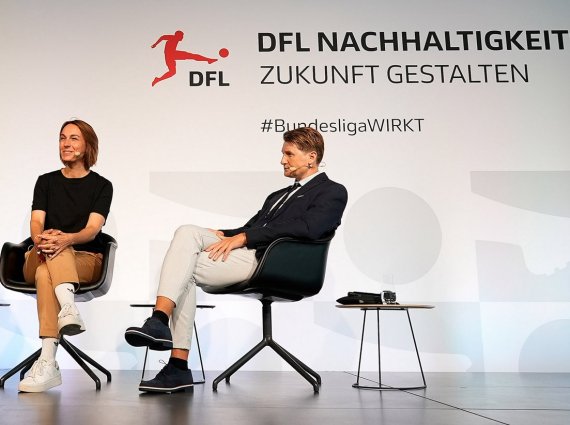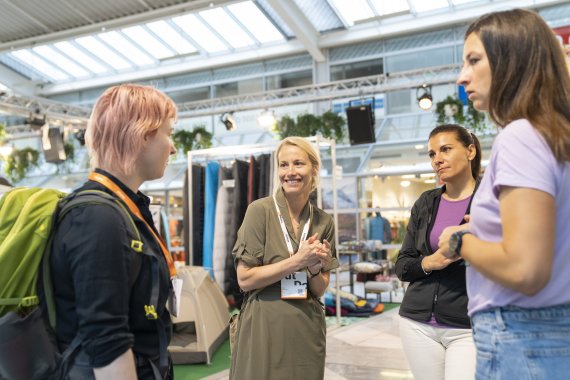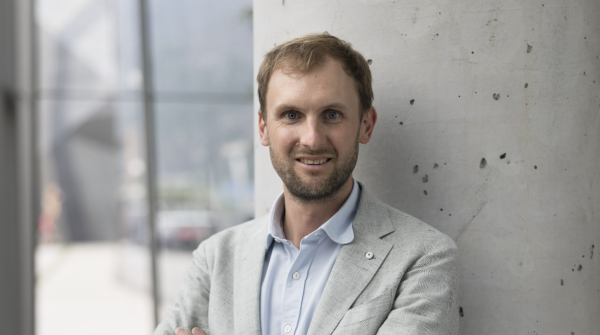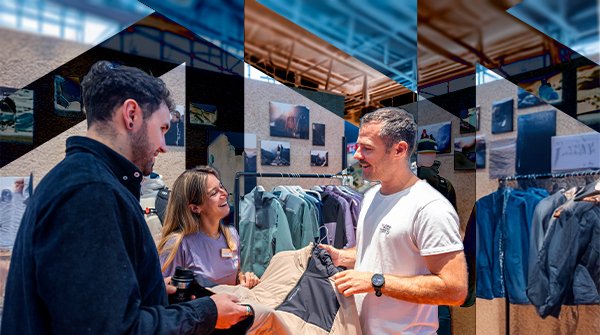In the comic, things seem relatively simple. A bit of hard thinking, a quick snap of the fingers - and the imaginary light bulb above your head lights up, signalling the arrival of a flash of inspiration. In real life, the search for the sparkling idea is usually more difficult. Nevertheless, it is by no means pure chance. Smart idea management can help companies, associations and organizations create an atmosphere in which creativity flourishes.
Ideation or business inspiration are the names of the methods that serve as a catalyst for idea generation. But why are they in such demand at the moment? "When ideas come from within, they are very authentic and usually fit in with what a club, association or company represents," explains Torsten Weber, professor at CBS University and transformation expert at the German Football League (DFL). "For new ideas, club members or employees are often the best source. They know the structures and, as a rule, also have the concern to help develop or further develop something in order to optimize processes."
Particularly if the people concerned experience a certain level of appreciation. At this point, Weber emphasizes the importance of an employee-oriented corporate or organizational culture. "In an environment where a lot is done for employee satisfaction, there is often a willingness to innovate and think along. There's a direct correlation there."
In addition, he said, a lot of things have to do with emotions. This is just as true in companies and associations as it is in the context of society as a whole. "In the future, it will be important to involve and inspire young people. In recent years, this may not have worked out so well. But the young generation has a renewed desire to make a difference, and they need to be given innovative opportunities to let off steam."
A look at the USA, with its - in this respect - model state of California, shows how this can succeed. The famous Silicon Valley is home to companies such as Meta and Google, whose innovation-promoting culture serves as a model for many companies.
So Google allows its employees to be innovative in different ways. One well-known example is the 80/20 rule. It encourages employees to spend 80 percent of their weekly working time on regular projects. 20 percent is left over for their own ideas and approaches. This opens up space for innovations in all directions.
Just like the unconventional flair of the gigantic Googleplex. The corporate headquarters in Mountain View, a part of Silicon Valley, looks like a mix of adventure playground and all-inclusive resort. In addition to retreats for a nap, there's a miniature golf course, a soccer field, a gym and other sports options. After all, a shared workout with colleagues is a great way to philosophize about the tasks at hand. It is also thought that employees who are relaxed and having fun are capable of top creative performance.

"Sport has a unifying effect. It leads to people exchanging ideas," confirms Weber. "And it promotes playfulness, competition, but also respect for one another. That's an important basis in the creative process." Sports, he says, is a social system in which people work together on something - a goal, a victory, a personal goal. That alone can be very conducive to innovation, he said. "If you want to achieve something together, that leads to communication."
Moreover, sports and business inspiration share a significant parallel. "In sports, you have to find creative solutions to get in front of the goal or in front of the basket in a targeted way via the build-up to the game," says Weber. "It's no different in idea management. If you want to develop an exciting product or win over new members, you have to be similarly creative and focused on the process."
What also speaks for sport in the creative process: It seems to literally shake good ideas out of their drawers. And it doesn't even take a sweaty match to get the mind going as well as the body. Gray matter loves movement. A few steps are enough to get them going. Some techniques for brainstorming take advantage of this.
One of them is brain walking. This variation of the well-known brainstorming is a creativity method in which, for example, flipcharts are distributed in a certain area: on a floor, in a stairwell or even in the fresh air. Each of these charts contains a question or a problem. All participants now go from station to station and write down their ideas on the respective points. The movement gets the brain moving and helps good ideas get off the ground.
If you want to increase the speed a little, you can unpack your jogging shoes. A round through the park floods the body with oxygen and stimulates creativity. But you shouldn't overdo it. If you run out of breath, your body has other things to worry about than the next brilliant thought.
But even with an optimal level of movement, one's own reflections sometimes lead nowhere. A way out of the creative impasse can be offered by like-minded people - as long as you have contact with them.
"There are already some good approaches to this from sports associations and organizations," says Weber. "The DFL, for example, has its own platform for technological innovations in sports. And the German Olympic Sports Confederation has set up the DOSB Knowledge Network to support knowledge and idea management. On this digital meeting place, people can help each other and push their own ideas."
The DOSB Knowledge Network is aimed at everyone in the non-profit sports system. Users can not only access knowledge from an extensive database, but also create and comment on contributions or set up their own groups.

If you look at sport itself, it is often the playful aspect that promotes creativity. However, this can also be profitably incorporated into ideation processes without physical activity. This has already been recognized by a famous manufacturer of clamping building blocks. "Serious Play" is the name of a set series from LEGO that is mainly used in the business world. "The target group is not children, but marketing departments or management consultancies," Weber explains.
The respective packages do not contain instructions or directions on how to use the bricks. Instead, participants develop promising business strategies, ways of dealing with problems and risks, or a deeper understanding of teams and their members in moderated workshops. The models put together are intended to provide a better visualization and anchor ideas in the mind - they become practically "graspable". There is no such thing as right or wrong in building. So it can happen that a task brings out different views, which are accepted by all participants.
One of the foundations of LEGO Serious Play, along with play and imagination, is constructionism. This concept can be traced back to Seymour Papert. The mathematician and psychologist showed that people learn something, especially when they create something. In addition to the actual thing, their own theories and new insights emerge in the process. These in turn enable the participants to construct much more complex things in the following.
Perhaps not (clamp construction) brick by brick, but step by step, VAUDE wants to develop further. "Steps" is the name of the outdoor brand's idea management concept. Everyone in the company can publish ideas via a social intranet, in writing or with pictures. The suggestions are shared in the designated community and possibly further developed directly by others. Idea scouts from different areas of the company accompany the process. They can provide direction or bring in stakeholders.
Certainly, the prospect of being able to make a positive difference is in itself a certain incentive to participate in steps. At VAUDE, however, thinking along does not only pay off on an emotional level. If a suggestion is put into practice, all those involved in the innovation process receive so-called innovation points. These can be collected and later exchanged for various prizes from a reward catalogue. A prominent example of a successful idea is the founding of an upcycling workshop at VAUDE. In the run-up, an employee from the manufactory had suggested producing shopper bags from leftover materials.
"I think these incentive systems are very important and would like to see us implement them much more in associations and companies," says Weber. Ultimately, however, it is not the form of idea management that is decisive, but the overall picture. "Without innovations and creative new approaches, there is no improvement, no optimization, but only a kind of standstill. That's why it's so important that something happens in clubs, associations and companies." And soon, hopefully, numerous imaginary light bulbs will light up above the heads of association members and employees to indicate a much-needed flash of inspiration.

 Sports BusinessSki Mountaineering Goes Olympic: What Milano-Cortina 2026 Means
Sports BusinessSki Mountaineering Goes Olympic: What Milano-Cortina 2026 Means
- ISPO awards
- Mountain sports
- Bike
- Design
- Retail
- Fitness
- Health
- ISPO Job Market
- ISPO Munich
- ISPO Shanghai
- Running
- Brands
- Sustainability
- Olympia
- OutDoor
- Promotion
- Sports Business
- ISPO Textrends
- Triathlon
- Water sports
- Winter sports
- eSports
- SportsTech
- OutDoor by ISPO
- Heroes
- Transformation
- Sport Fashion
- Urban Culture
- Challenges of a CEO
- Trade fairs
- Sports
- Find the Balance
- Product reviews
- Newsletter Exclusive Area
- Magazine




